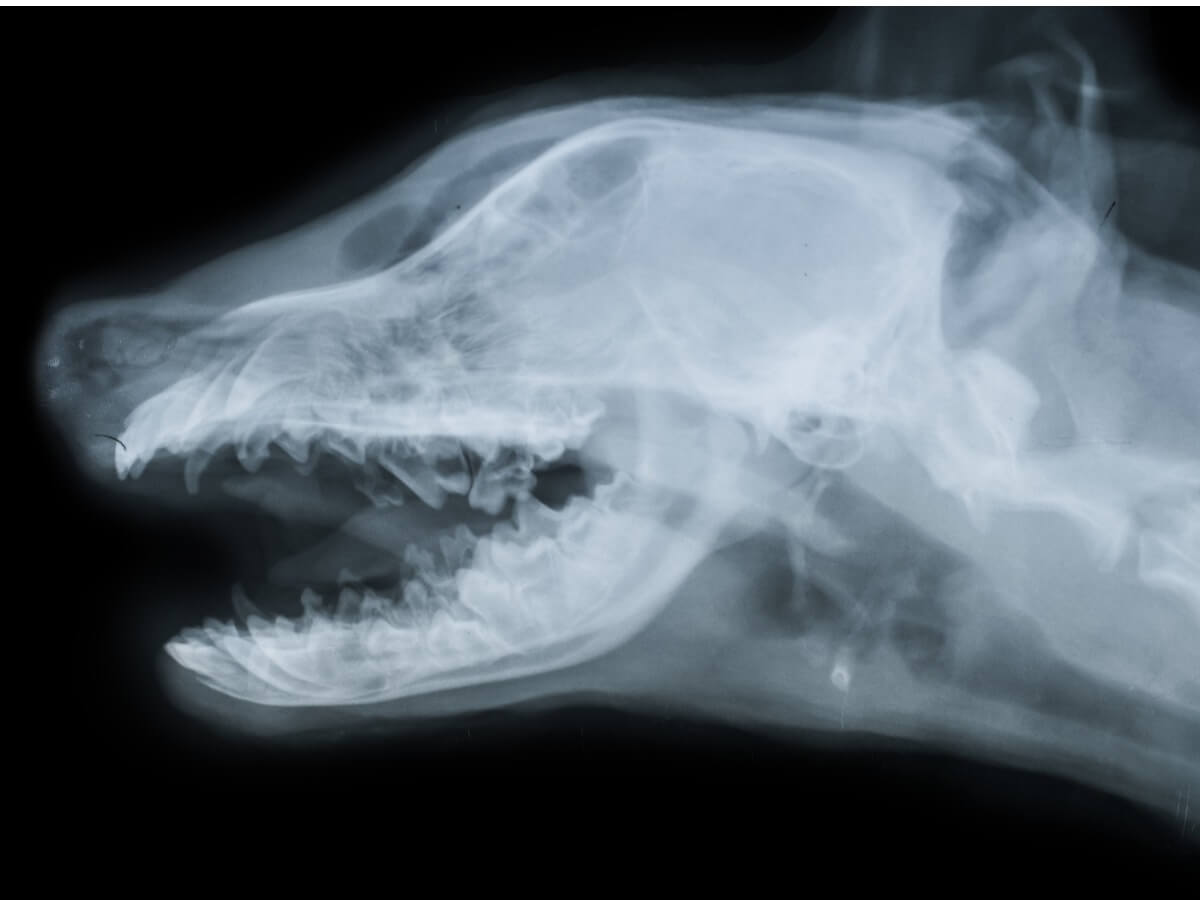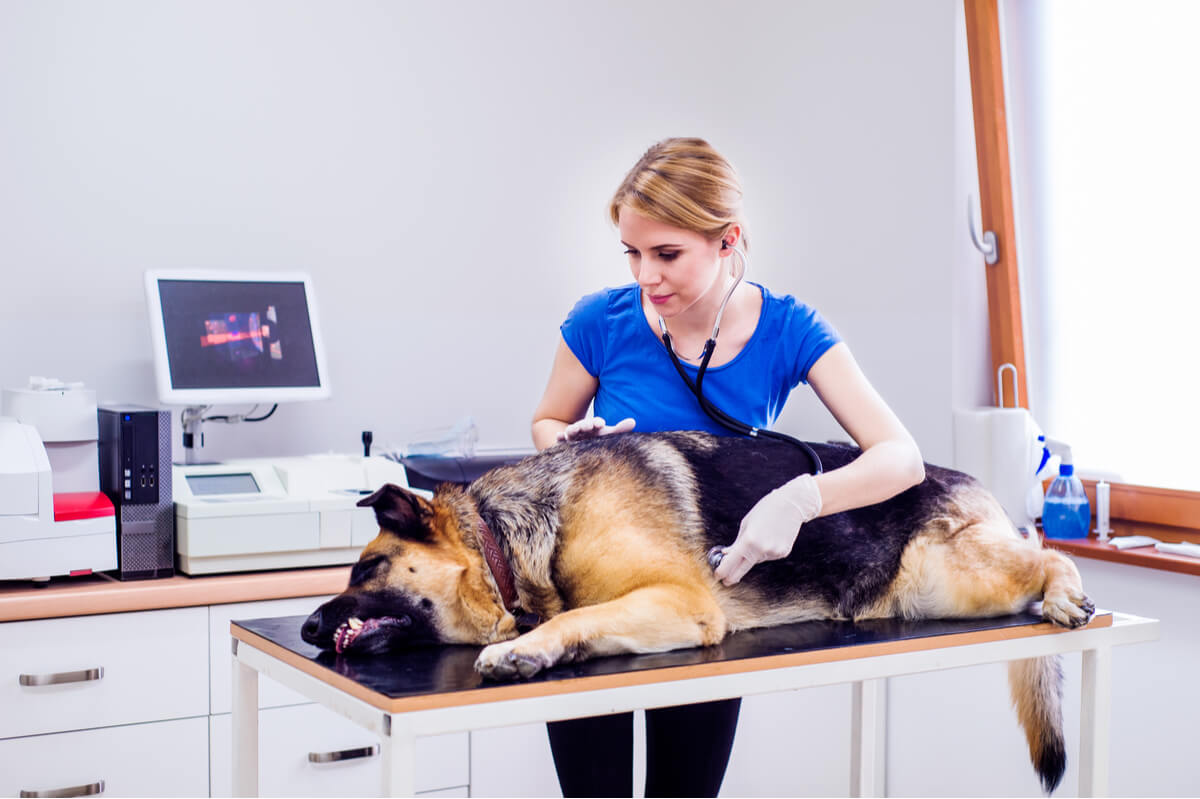Strokes in Dogs: Causes, Symptoms and Treatment


Written and verified by the vet Daniel Aguilar
When you live with a pet, you’ll always seek to keep it as healthy as possible. For this reason, owners often think about diseases or illnesses that their furry friend may develop. Many of them appear without warning, and can take us by surprise, hence the importance of knowing how to deal with certain medical conditions. Today, we’ll look at strokes in dogs.
This particular condition, which frequently affects humans, can also manifest itself in your pet and put their life at risk. In this article, we’ll tell you everything you need to know about this disease, so that you’ll be able to identify it quickly, and act in the best possible way.
What are strokes in dogs?
Strokes, also known as cerebrovascular accidents (CVA) are events where the blood flow to a specific part of the brain is interrupted. During this interruption, the supply of oxygen and glucose necessary for the brain cells won’t be sufficient and they could stop working properly – either temporarily or permanently.
There are two types of stroke in dogs, each with a different etiology and manifestations. They’re the following:
- Ischemic or embolic stroke: Also known as a cerebral infarction, ischemic strokes occur when a clot or embolus obstructs the flow of blood in a vein or artery. As a consequence, there won’t be a uniform irrigation to the brain and this can create ischemic necrosis of the affected area.
- Hemorrhagic stroke: This type of stroke in dogs occurs when a blood vessel in the brain ruptures. When this rupture occurs, blood will accumulate in the cranial cavity, increasing the internal pressure of the brain structures and damaging the nervous system in general. Direct trauma or aneurysms can trigger this condition.

Causes of strokes in dogs
There are many different factors that can cause strokes in dogs. Any situation that can cause a clot or embolus to form in the bloodstream, large enough to obstruct its entry into the brain will be a trigger.
Taking the above into account, here are the seven main causes for this condition in dogs.
Endocarditis
This term refers to the formation of clots caused by an infection in the pericardium. The clots are then able to travel through the bloodstream, resulting in the clinical manifestation of strokes in dogs.
Post-surgical clots
If your pet has undergone surgery, blood clots may appear afterwards. The risk of producing an obstruction will depend on the size of the clot, its location, and the dog’s overall health, among many other things.
Thrombocytopenia
A drop in circulating platelets in the canid’s circulatory system is capable of compromising coagulation. The thrombocytopenic state can be caused by various diseases, but canine ehrlichiosis is one of the most common. The type of stroke in dogs that will bring about thrombocytopenia will be of hemorrhagic origin.
Neoplasms
The abnormal formation of tissue that a neoplasm brings with it – regardless of its benign or malignant nature – can compromise the oxygenation of the brain by blocking a blood pathway. A hemorrhage can be even more favored in cases where the tumor is affecting the coagulant function.
If the neoplasm is self-limited, it’s considered benign, but if it grows out of control it is cancer.
Parasite emboli
The accumulation of parasites found in the bloodlines could be responsible for an obstruction and produce a stroke in dogs of ischemic origin. The heartworm (Dirofilaria imittis) is the most common parasite that can cause this situation.
Von Willebrand disease
This pathology is caused by Von Willebrand disease, where there’s a lack of glycoprotein in the blood, which is essential in the coagulation process. Strokes in dogs deriving from this condition will be of the hemorrhagic type.
Arterial hypertension
Regardless of the reason why your pet has very high blood pressure, the predisposition to have a stroke increases with this imbalance. To avoid this, and many other similar situations, it’s best to always ensure your dog is in the best possible health.
Symptoms of strokes in dogs
Most of the signs of stroke processes in dogs usually appear abruptly. The symptoms present will depend on the area the ischemia is found in.
Seizures, ataxia, vestibular syndrome, nystagmus, and paralysis are the most common signs that can occur in stroke disease in dogs. Muscle weakness and fever are also typical symptoms in these patients.
How to diagnose stroke in dogs?
As this is a multifactorial condition, the information that the various complementary studies will provide the veterinarian will be key to identifying the type of stroke that the dog has had. A general medical evaluation, along with a complete physical examination, will be the first step in this process.
Studies such as hematology, blood chemistry, and urinalysis will be helpful when a hemorrhagic stroke is suspected due to a drop in platelets. Endocrine tests, clotting time analysis, along with hemodynamic tests (echocardiogram, electrocardiogram, and blood pressure measurement) – will also be an excellent tool.
Treatment and prevention of stroke in dogs
Unfortunately, there’s no specific treatment for this condition. Support therapy and treatment against symptoms, specially adapted to the patient’s condition, will be recommended for your pet.
As preventive measures for strokes in dogs, good habits are important, such as a balanced diet, enough exercise, periodic medical check-ups and notification of any strange behavior in your pet. Strokes often occur when an illness is neglected for a long time.

Can a dog recover from a stroke?
As this pathology directly affects the brain, the sequelae that the dog may experience will depend on the affected brain area. Very often, the damage is usually irreversible, as is the case with hemorrhagic stroke, in which the prognosis can be varied.
If your pet has overcome this condition, it could show some sequelae of nervous origin due to the damage that the stroke has caused in its body. Finally, remember that the signs can appear at any time. If this should occur, go quickly to a veterinary clinic for quick attention, in order to increase the chances of a good outcome.
When you live with a pet, you’ll always seek to keep it as healthy as possible. For this reason, owners often think about diseases or illnesses that their furry friend may develop. Many of them appear without warning, and can take us by surprise, hence the importance of knowing how to deal with certain medical conditions. Today, we’ll look at strokes in dogs.
This particular condition, which frequently affects humans, can also manifest itself in your pet and put their life at risk. In this article, we’ll tell you everything you need to know about this disease, so that you’ll be able to identify it quickly, and act in the best possible way.
What are strokes in dogs?
Strokes, also known as cerebrovascular accidents (CVA) are events where the blood flow to a specific part of the brain is interrupted. During this interruption, the supply of oxygen and glucose necessary for the brain cells won’t be sufficient and they could stop working properly – either temporarily or permanently.
There are two types of stroke in dogs, each with a different etiology and manifestations. They’re the following:
- Ischemic or embolic stroke: Also known as a cerebral infarction, ischemic strokes occur when a clot or embolus obstructs the flow of blood in a vein or artery. As a consequence, there won’t be a uniform irrigation to the brain and this can create ischemic necrosis of the affected area.
- Hemorrhagic stroke: This type of stroke in dogs occurs when a blood vessel in the brain ruptures. When this rupture occurs, blood will accumulate in the cranial cavity, increasing the internal pressure of the brain structures and damaging the nervous system in general. Direct trauma or aneurysms can trigger this condition.

Causes of strokes in dogs
There are many different factors that can cause strokes in dogs. Any situation that can cause a clot or embolus to form in the bloodstream, large enough to obstruct its entry into the brain will be a trigger.
Taking the above into account, here are the seven main causes for this condition in dogs.
Endocarditis
This term refers to the formation of clots caused by an infection in the pericardium. The clots are then able to travel through the bloodstream, resulting in the clinical manifestation of strokes in dogs.
Post-surgical clots
If your pet has undergone surgery, blood clots may appear afterwards. The risk of producing an obstruction will depend on the size of the clot, its location, and the dog’s overall health, among many other things.
Thrombocytopenia
A drop in circulating platelets in the canid’s circulatory system is capable of compromising coagulation. The thrombocytopenic state can be caused by various diseases, but canine ehrlichiosis is one of the most common. The type of stroke in dogs that will bring about thrombocytopenia will be of hemorrhagic origin.
Neoplasms
The abnormal formation of tissue that a neoplasm brings with it – regardless of its benign or malignant nature – can compromise the oxygenation of the brain by blocking a blood pathway. A hemorrhage can be even more favored in cases where the tumor is affecting the coagulant function.
If the neoplasm is self-limited, it’s considered benign, but if it grows out of control it is cancer.
Parasite emboli
The accumulation of parasites found in the bloodlines could be responsible for an obstruction and produce a stroke in dogs of ischemic origin. The heartworm (Dirofilaria imittis) is the most common parasite that can cause this situation.
Von Willebrand disease
This pathology is caused by Von Willebrand disease, where there’s a lack of glycoprotein in the blood, which is essential in the coagulation process. Strokes in dogs deriving from this condition will be of the hemorrhagic type.
Arterial hypertension
Regardless of the reason why your pet has very high blood pressure, the predisposition to have a stroke increases with this imbalance. To avoid this, and many other similar situations, it’s best to always ensure your dog is in the best possible health.
Symptoms of strokes in dogs
Most of the signs of stroke processes in dogs usually appear abruptly. The symptoms present will depend on the area the ischemia is found in.
Seizures, ataxia, vestibular syndrome, nystagmus, and paralysis are the most common signs that can occur in stroke disease in dogs. Muscle weakness and fever are also typical symptoms in these patients.
How to diagnose stroke in dogs?
As this is a multifactorial condition, the information that the various complementary studies will provide the veterinarian will be key to identifying the type of stroke that the dog has had. A general medical evaluation, along with a complete physical examination, will be the first step in this process.
Studies such as hematology, blood chemistry, and urinalysis will be helpful when a hemorrhagic stroke is suspected due to a drop in platelets. Endocrine tests, clotting time analysis, along with hemodynamic tests (echocardiogram, electrocardiogram, and blood pressure measurement) – will also be an excellent tool.
Treatment and prevention of stroke in dogs
Unfortunately, there’s no specific treatment for this condition. Support therapy and treatment against symptoms, specially adapted to the patient’s condition, will be recommended for your pet.
As preventive measures for strokes in dogs, good habits are important, such as a balanced diet, enough exercise, periodic medical check-ups and notification of any strange behavior in your pet. Strokes often occur when an illness is neglected for a long time.

Can a dog recover from a stroke?
As this pathology directly affects the brain, the sequelae that the dog may experience will depend on the affected brain area. Very often, the damage is usually irreversible, as is the case with hemorrhagic stroke, in which the prognosis can be varied.
If your pet has overcome this condition, it could show some sequelae of nervous origin due to the damage that the stroke has caused in its body. Finally, remember that the signs can appear at any time. If this should occur, go quickly to a veterinary clinic for quick attention, in order to increase the chances of a good outcome.
All cited sources were thoroughly reviewed by our team to ensure their quality, reliability, currency, and validity. The bibliography of this article was considered reliable and of academic or scientific accuracy.
Crespo V. Estudio retrospectivo de 19 casos de trombosis; etiología y localización de los trombos. Bellaterra, 2015. Consultado el 19 de junio de 2021. Disponible en: https://www.clinvetpeqanim.com/img/pdf/648483368.pdf
Font A. Enfermedad de Von Willebrand en el perro. Un caso clínico. Barcelona 1987. Consultado el 19 de junio de 2021. Disponible en: https://ddd.uab.cat/pub/clivetpeqani/11307064v7n1/11307064v7n1p39.pdf
Faneite M. Ictus en perros – Síntomas, causas y tratamiento. España. 22 de abril de 2020. Consultado el 19 de junio de 2021. Disponible en: https://www.expertoanimal.com/ictus-en-perros-sintomas-causas-y-tratamiento-24878.html
Aguilar M. Ictus en perros: qué es, síntomas y cómo prevenirlo. 5 de marzo de 2019. Consultado el 19 de junio de 2021. Disponible en: https://www.muyinteresante.es/mascotas/fotos/ictus-en-perros-que-es-sintomas-y-como-prevenirlo/1
Ictus en perros y principales síntomas que nos hacen sospechar. Barcelona, España. Consultado el 19 de junio de 2019. Disponible en: https://www.affinity-petcare.com/vetsandclinics/es/ictus-en-perros-y-principales-sintomas-que-nos-hacen-sospechar
Ademir J. El problema del ictus en los perros. México. 22 de abril de 2020. Consultado el 19 de junio de 2019. Disponible en: https://www.grupolovet.com/blogs/noticias/el-problema-del-ictus-en-los-perros#:~:text=Principales%20s%C3%ADntomas%20del%20ictus%20en%20los%20perros&text=Los%20s%C3%ADntomas%20principales%20del%20ictus,giros%20incontrolados%20de%20la%20cabeza.
Rodríguez Y. ¿Qué es el ictus en perros? Paris, Francia. 8 de febrero de 2021. Consultado el 19 de junio de 2019. Disponible en: https://wamiz.es/perro/consejos/14161/que-es-el-ictus-en-perros
This text is provided for informational purposes only and does not replace consultation with a professional. If in doubt, consult your specialist.








